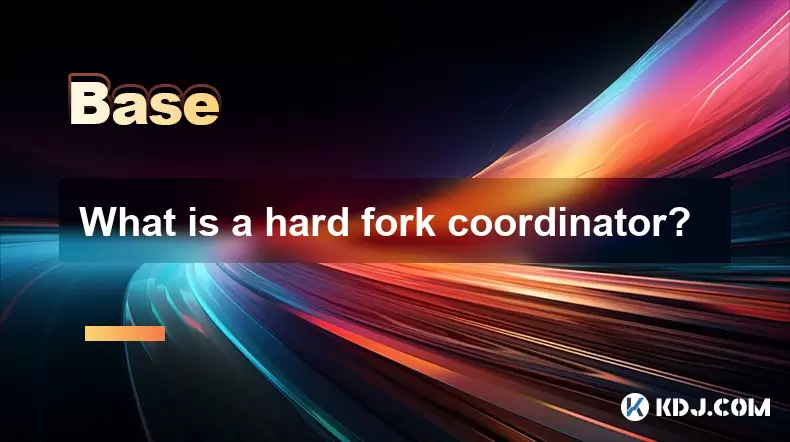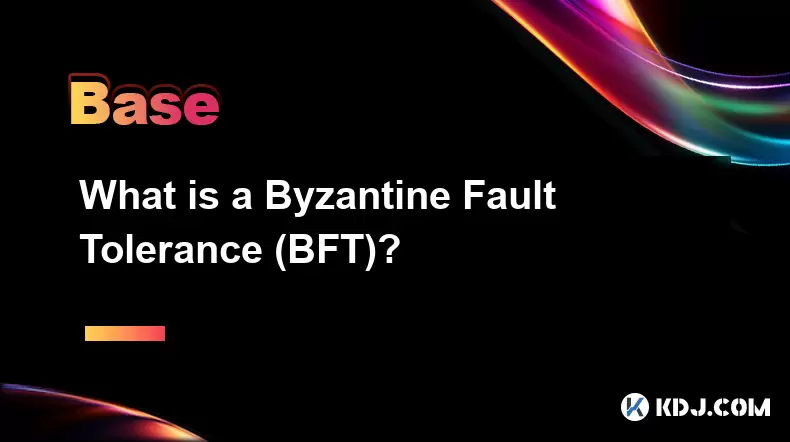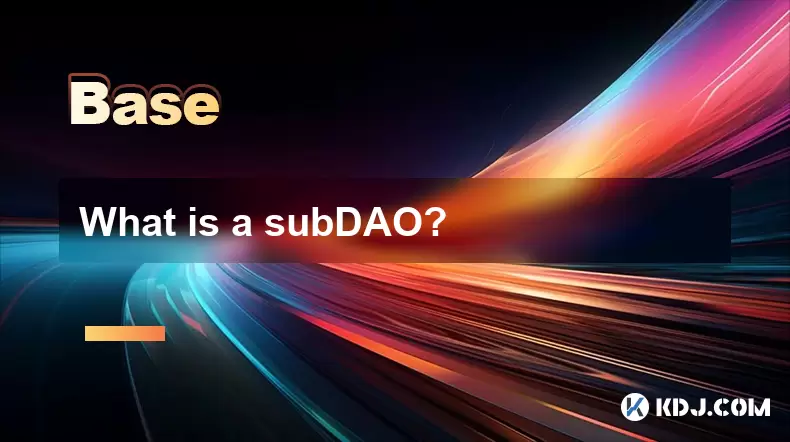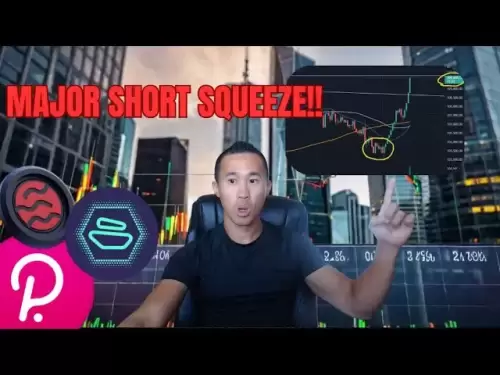-
 Bitcoin
Bitcoin $108,996.1967
2.65% -
 Ethereum
Ethereum $2,568.0446
5.65% -
 Tether USDt
Tether USDt $1.0004
0.02% -
 XRP
XRP $2.2532
3.07% -
 BNB
BNB $659.8395
1.51% -
 Solana
Solana $153.8915
3.45% -
 USDC
USDC $0.9999
-0.02% -
 TRON
TRON $0.2839
0.92% -
 Dogecoin
Dogecoin $0.1696
6.19% -
 Cardano
Cardano $0.5894
6.83% -
 Hyperliquid
Hyperliquid $39.8845
6.55% -
 Sui
Sui $2.8870
7.43% -
 Bitcoin Cash
Bitcoin Cash $501.4074
-0.52% -
 Chainlink
Chainlink $13.5237
4.68% -
 UNUS SED LEO
UNUS SED LEO $9.0168
0.76% -
 Avalanche
Avalanche $18.6548
7.56% -
 Stellar
Stellar $0.2405
4.66% -
 Toncoin
Toncoin $2.8775
3.34% -
 Shiba Inu
Shiba Inu $0.0...01189
4.74% -
 Litecoin
Litecoin $88.6280
5.55% -
 Hedera
Hedera $0.1560
7.09% -
 Monero
Monero $322.9053
2.78% -
 Polkadot
Polkadot $3.5526
7.23% -
 Bitget Token
Bitget Token $4.5886
2.35% -
 Dai
Dai $1.0000
0.00% -
 Ethena USDe
Ethena USDe $1.0001
0.00% -
 Uniswap
Uniswap $7.3492
12.17% -
 Pepe
Pepe $0.0...01023
9.43% -
 Aave
Aave $274.8468
5.51% -
 Pi
Pi $0.4933
1.06%
What is a liquidation cascade?
Liquidation cascades in crypto occur when extreme price moves trigger mass position closures, fueled by high leverage and concentrated open interest.
Jul 03, 2025 at 07:15 am

Understanding the Concept of Liquidation
In the realm of cryptocurrency trading, liquidation refers to the process by which a trader's position is automatically closed due to insufficient funds to maintain the leveraged trade. This typically occurs when the market moves against the trader's position and their account equity falls below the required maintenance margin. Leverage, which allows traders to control larger positions with smaller amounts of capital, increases both potential gains and losses. When losses accumulate beyond a certain threshold, exchanges or brokers step in to limit further risk exposure by closing the position.
Liquidation acts as a protective mechanism for platforms and other traders, ensuring that traders do not end up with negative balances and that counterparties are not exposed to excessive risk. The liquidation price is calculated based on factors such as leverage used, entry price, and funding rates in perpetual contracts.
The Mechanics Behind a Liquidation Cascade
A liquidation cascade occurs when a large number of leveraged positions are simultaneously liquidated due to rapid and extreme price movements. These cascades often happen during periods of high volatility, where prices move swiftly in one direction, triggering a chain reaction across multiple markets and exchanges.
- Large liquidations begin at key support/resistance levels
- These initial liquidations create downward (or upward) pressure on the asset’s price
- As more stop-loss orders are triggered, the price continues to move sharply
- This movement leads to even more liquidations, feeding into the cycle
This self-reinforcing loop can cause significant short-term price swings, often far beyond what fundamental or technical analysis would suggest under normal conditions.
Why Do Liquidation Cascades Happen?
Several factors contribute to the occurrence of liquidation cascades in crypto markets:
- High leverage usage among retail and institutional traders: Many traders use excessive leverage, sometimes up to 100x, increasing the likelihood of liquidation during volatile moves.
- Concentration of open interest on major exchanges: If a large portion of open futures contracts is concentrated around a specific price level, its breach can lead to mass liquidations.
- Lack of liquidity at critical price points: Thin order books at crucial levels make it easier for large trades or liquidation engines to push prices dramatically in one direction.
Additionally, algorithmic trading systems and bots designed to hunt liquidation zones exacerbate the situation by aggressively pushing prices through these thresholds.
How to Identify Potential Liquidation Zones
Traders and analysts monitor several indicators and tools to anticipate where liquidation cascades might occur:
- Open interest (OI) charts: Sudden spikes in OI at specific strike prices may indicate vulnerable zones.
- Liquidation heatmaps: These visual representations show where the most liquidations have historically occurred.
- Order book depth analysis: A thin order book at a particular price suggests low liquidity, increasing the chances of cascading liquidations.
By analyzing these data points, traders can avoid entering positions near known liquidation traps or strategically place stop-loss orders beyond those zones.
Strategies to Mitigate the Risk of Liquidation
Avoiding being caught in a liquidation cascade requires careful planning and disciplined risk management:
- Use conservative leverage: Reducing leverage significantly lowers the chance of liquidation even during strong price swings.
- Set realistic stop-loss levels: Placing stops away from obvious support/resistance areas and known liquidation zones helps prevent premature exits.
- Diversify across exchanges and assets: Concentrating all positions on a single platform or token increases systemic risk during cascading events.
- Monitor funding rates and exchange-specific metrics: High funding rates can signal increased speculative activity, potentially leading to abrupt reversals.
Some experienced traders also employ hedging techniques using options or inverse futures to protect against directional risks during volatile periods.
Real-World Examples of Liquidation Cascades
Historically, major cryptocurrencies like Bitcoin and Ethereum have experienced significant liquidation cascades during sharp corrections. For example:
- In May 2021, Bitcoin fell from over $60,000 to below $30,000 within weeks, triggering billions in long liquidations across major derivatives exchanges.
- Ethereum’s crash in June 2022 saw over $1 billion in ETH liquidations within a single day, largely driven by macroeconomic concerns and leveraged long unwinding.
These events illustrate how quickly sentiment can shift in crypto markets, especially when large numbers of traders are positioned similarly and using aggressive leverage.
Frequently Asked Questions
Q: Can liquidation cascades be avoided entirely?
While it’s difficult to completely avoid liquidation cascades in highly leveraged environments, traders can reduce exposure by using lower leverage, placing strategic stop-loss orders, and staying informed about open interest and liquidity levels.
Q: Are liquidation cascades unique to cryptocurrency markets?
No, they can occur in any leveraged financial market, including forex and traditional futures markets. However, crypto markets experience them more frequently due to higher volatility, widespread use of high leverage, and relatively lower liquidity compared to traditional assets.
Q: How do exchanges handle massive liquidation events?
Exchanges typically use an auto-deleveraging system or insurance funds to absorb losses and ensure traders aren’t left with negative balances. Some platforms also implement forced liquidations gradually to prevent excessive slippage and market manipulation.
Q: Is there a way to profit from liquidation cascades?
Experienced traders sometimes attempt to anticipate and trade liquidation cascades by positioning themselves ahead of known support/resistance levels. However, this strategy carries high risk and requires precise timing and deep market understanding.
Disclaimer:info@kdj.com
The information provided is not trading advice. kdj.com does not assume any responsibility for any investments made based on the information provided in this article. Cryptocurrencies are highly volatile and it is highly recommended that you invest with caution after thorough research!
If you believe that the content used on this website infringes your copyright, please contact us immediately (info@kdj.com) and we will delete it promptly.
- Meme Coin Mania: Is BTC Bull the Next Big Thing in a Limited Time BTC Bull Run?
- 2025-07-03 12:30:11
- Bitcoin Soars to $109,000: What's Fueling the Crypto Rally?
- 2025-07-03 10:30:13
- Splatterhouse Rocks Retro Scene: A UK Magazine Deep Dive
- 2025-07-03 12:30:11
- Bitcoin, the Senate Bill, and $107K: A Wild Ride on Capitol Hill
- 2025-07-03 12:50:11
- Chainlink's Chart Patterns Hint at a Big Move: Decoding the LINK Price
- 2025-07-03 10:50:12
- Shiba Inu, Solana Uptrend, Bitcoin Breakout: Decoding the Crypto Buzz
- 2025-07-03 10:50:12
Related knowledge

What is a liquidation cascade?
Jul 03,2025 at 07:15am
Understanding the Concept of LiquidationIn the realm of cryptocurrency trading, liquidation refers to the process by which a trader's position is automatically closed due to insufficient funds to maintain the leveraged trade. This typically occurs when the market moves against the trader's position and their account equity falls below the required maint...

What is a hard fork coordinator?
Jul 03,2025 at 12:42pm
Understanding the Role of a Hard Fork CoordinatorIn the world of blockchain and cryptocurrencies, a hard fork coordinator plays a critical role during major network upgrades. A hard fork is a significant change to a blockchain’s protocol that makes previously invalid blocks or transactions valid (or vice versa). This type of upgrade requires all nodes o...

What is a Byzantine Fault Tolerance (BFT)?
Jul 03,2025 at 11:49am
Understanding the Concept of Byzantine Fault ToleranceByzantine Fault Tolerance (BFT) is a critical concept in distributed systems, particularly within the realm of blockchain technology and cryptocurrencies. It refers to the ability of a system to continue functioning correctly even when some components fail or behave maliciously. The term originates f...

What is a subDAO?
Jul 03,2025 at 09:36am
Understanding the Concept of SubDAOA SubDAO, short for Sub-Decentralized Autonomous Organization, is a specialized entity that operates under the umbrella of a larger DAO (Decentralized Autonomous Organization). It functions with its own set of rules, governance mechanisms, and tokenomics while remaining aligned with the overarching goals of the parent ...

What is the Travel Rule in crypto?
Jul 03,2025 at 10:28am
Understanding the Travel Rule in CryptocurrencyThe Travel Rule is a regulatory requirement initially introduced by the Financial Action Task Force (FATF) for traditional financial institutions. It has since been extended to cryptocurrency transactions, especially those involving Virtual Asset Service Providers (VASPs). The core purpose of this rule is t...

What is undercollateralized lending?
Jul 03,2025 at 12:14pm
Understanding the Basics of Undercollateralized LendingUndercollateralized lending refers to a type of loan agreement in which the borrower provides less collateral than the value of the loan they are receiving. This contrasts sharply with traditional DeFi (Decentralized Finance) lending models, where users must deposit more than the amount they wish to...

What is a liquidation cascade?
Jul 03,2025 at 07:15am
Understanding the Concept of LiquidationIn the realm of cryptocurrency trading, liquidation refers to the process by which a trader's position is automatically closed due to insufficient funds to maintain the leveraged trade. This typically occurs when the market moves against the trader's position and their account equity falls below the required maint...

What is a hard fork coordinator?
Jul 03,2025 at 12:42pm
Understanding the Role of a Hard Fork CoordinatorIn the world of blockchain and cryptocurrencies, a hard fork coordinator plays a critical role during major network upgrades. A hard fork is a significant change to a blockchain’s protocol that makes previously invalid blocks or transactions valid (or vice versa). This type of upgrade requires all nodes o...

What is a Byzantine Fault Tolerance (BFT)?
Jul 03,2025 at 11:49am
Understanding the Concept of Byzantine Fault ToleranceByzantine Fault Tolerance (BFT) is a critical concept in distributed systems, particularly within the realm of blockchain technology and cryptocurrencies. It refers to the ability of a system to continue functioning correctly even when some components fail or behave maliciously. The term originates f...

What is a subDAO?
Jul 03,2025 at 09:36am
Understanding the Concept of SubDAOA SubDAO, short for Sub-Decentralized Autonomous Organization, is a specialized entity that operates under the umbrella of a larger DAO (Decentralized Autonomous Organization). It functions with its own set of rules, governance mechanisms, and tokenomics while remaining aligned with the overarching goals of the parent ...

What is the Travel Rule in crypto?
Jul 03,2025 at 10:28am
Understanding the Travel Rule in CryptocurrencyThe Travel Rule is a regulatory requirement initially introduced by the Financial Action Task Force (FATF) for traditional financial institutions. It has since been extended to cryptocurrency transactions, especially those involving Virtual Asset Service Providers (VASPs). The core purpose of this rule is t...

What is undercollateralized lending?
Jul 03,2025 at 12:14pm
Understanding the Basics of Undercollateralized LendingUndercollateralized lending refers to a type of loan agreement in which the borrower provides less collateral than the value of the loan they are receiving. This contrasts sharply with traditional DeFi (Decentralized Finance) lending models, where users must deposit more than the amount they wish to...
See all articles

























































































